Healthy Snacking
Snacking can get a bad rap. It is true that snacking can lead to weight gain and a poor-quality diet, however, the reverse is also true.
Snacks can certainly be a part of a healthy and balanced diet.
In this post, I am going to explain how to include snacks as a part of a nutritious and balanced diet.
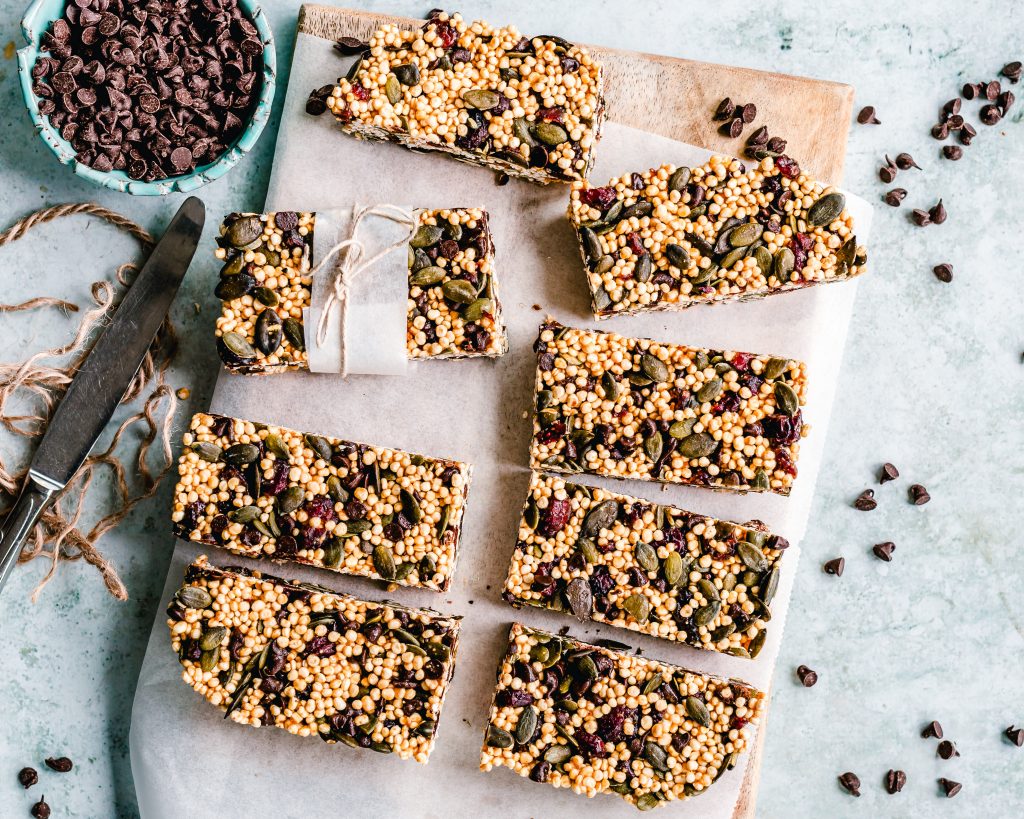
Skip to
What is a snack
Why snacks are important
Cons of snacking
How to avoid low quality snacking
Nutritious snack ideas
What is a snack?
Firstly, what is a snack?
Snacks are a small amount of food typically eaten between main meals.
Typically a traditional meal pattern consists of 3 main meals; breakfast lunch and dinner, and 1-3 snacks in-between to top up our energy.
Why are snacks important?
Between main meals, it is only natural to become hungry again before the next main meal. Eating every 3-4 hours is reasonable. Snacking can be good as it can:
- Increase concentration
- Maintain energy levels
- Manage hunger
- Regulate blood sugar levels
- Prevent overeating later on
- Add to your daily recommended vitamin and mineral intake
Don’t forget to also have good quality main meals
Having a good quality main is also going to play a role in appetite regulation so it is important to make smart choices during main meals such as appropriate portions, and a balance of carbs, fats, and proteins.
See related post: breakfast choices
Key nutrients
By including snacks composed of mainly core food groups [fruit, grains, vegetables, dairy, or lean proteins], you are going to be topping up your nutrient intake and including sources of fibre and protein. Fibre is important for gut health, slowing digestion, bowel movements, and weight management. It is recommended to have 30g (for men) and 25g (for women) of fibre per day as it is linked with a reduced risk of heart disease and some cancers. Sources of fibre include pulses and legumes, whole grains, fruits and vegetables. Protein can also help us stay full for longer and of course help with muscle mass and strength. Good sources of protein include meat, eggs, dairy, tofu, pulses, and legumes. Both protein and fibre slow digestion which keep us full. By including these two nutrients, you are going to consume beneficial nutrients and have a good effect on appetite.
Cons of snacking
Snacking becomes a problem when we are doing it too often, ‘graze’ all day long in place of main meals, choose processed foods over core food groups, or do it out of boredom rather than hunger.
Long-term, poor-quality snack choices can result in gain weight from high amounts of high-calorie and low-nutrient foods.
We want to avoid snacking on highly processed foods like chips, sweet biscuits, lollies, chocolate, and cakes. Many snack options in supermarkets are high in sugar and fat which can make it difficult to choose products supporting a healthy diet.
How to avoid low-quality snacking
A snack should be a small portion and shouldn’t interfere with your appetite for main meals. This could look like 150-250 calories.
An easy way to avoid overconsuming poor-quality snacks is by not including more than 2 discretionary foods each day, as recommended by AGHE. This is how we can include treated foods into a healthy diet. However, do aim to include snacks from core food groups [fruit, grains, vegetables, dairy, or lean proteins] to ensure that you are getting good quality nutrients and limiting processed discretionary foods.
A serving of discretionary food equates to 600kj. This could look like 2 scoops (or 75g) of ice cream, 2 slices (or 50-60g) salami or ham, 2-3 sweet biscuits, 1 (40g) doughnut, 25g chocolate, 2 tablespoons of cream, or 200ml wine.
Other examples of discretion foods include:
- High in fat and added sugar
Cake, muffins, chocolate, doughnuts, ice cream, muesli bars, cookies and other sweet biscuits
- High in fat
Bacon, ham, salami, butter, cream, pies, pastry, pizza, potato chips, some sauces
- High in added sugar
Energy drinks, fruit drinks, cordial, sweetened waters, syrups, and some sauces
- Alcohol
beer, wine, spirits
AGHE recommends 0-2 serves because it is NOT AN ESSENTIAL part of a balanced diet meaning you can ideally have ZERO serves, as they provide no essential nutrients that the body needs. You can include up to two serves as a part of an enjoyable, balanced, and healthy diet.
Table 1 below is a great guide based on the AGHE on choosing supermarket products in line with healthy eating.
Table 1: Nutrition information panel guide for snack products
|
Protein |
Fibre |
Total fat |
Saturated fat |
Sugar |
Sodium |
|
10-15g per snack |
>3g per serve |
<10g per 100g |
<3g per 100g |
<15g per 100g |
<400mg per 100g |
Making food decisions
Some people will need more snacks than others. If you are not very physically active throughout the day you might not need any snacks, or if you are physically active you might need more as you are burning more energy and requiring more physical repair. If you are aiming to lose weight you can still have snacks to maintain appetite, the quality and calorie content will just become more important. Here are some questions to ask yourself to see if you need a snack:
1. Am I actually hungry? Ask yourself if you would eat an apple, if you would then it’s a good sign your hungry, if you wouldn’t then you’re probably not hungry
2. How do I feel? Can you concentrate, do you feel low in energy or fatigued?
3. When did I last eat? Was it more than 3 hours ago, was that meal balanced [good balance of lean protein, carbs and healthy fats] and was the portion adequate?
4. What did I last eat? If you have any nutritional gaps in the day so far, use snacks as an opportunity to top up on those missing nutrients e.g. yoghurt for calcium, vegetables and fruit for vitamins and minerals
5. What do I have coming up? If you have a gym class coming up and you’re a bit hungry it might be a good idea to fuel up beforehand
To recap:
So far, we have discussed that we want to swap out high-calorie and low-nutrient foods with snacks higher in protein and fibre as these nutrients keep us full and are good for our health.
- Ensure the snack is a source of fibre and protein
- Limit serving of discretionary foods to 0-2 per day
- Ask yourself if you are hungry, check in with how you’re feeling, ask when you last ate, and ensure you are fuelled for upcoming activities
- Use snacks as an opportunity to fill any nutritional gaps
A snack should be a small portion and shouldn’t interfere with your appetite for main meals. This could look like 150-250 calories. Use Table 1 as a guide when selecting supermarket products.
Healthy snack ideas
Yoghurt + fruit
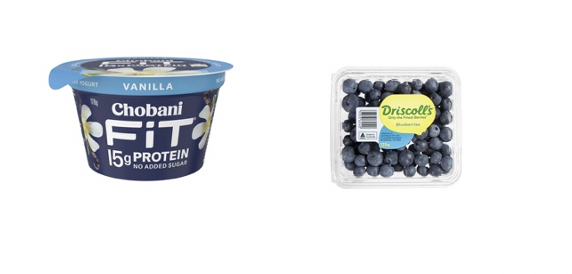
Description
Yoghurt is a good source of calcium, protein, and probiotics. Chobani Fit is a particularly good option is it is low in total and saturated fat and sugar, and high in protein. Adding fruit, like blueberries, is a good way to add fibre to the snack and help with satiety.
Other good yoghurt options include; Yo-pro protein or perform, Chobani Greek yoghurt lite
Dairy-free: Farmers Union Greek style Lactose-Free, Liddell’s lactose-free
Other topping options; Peanut or almond butter, granola or muesli, other fruit
Preparation: You could coat blueberries with yoghurt and freeze them for an interesting texture
Corn thins + avocado + tomato
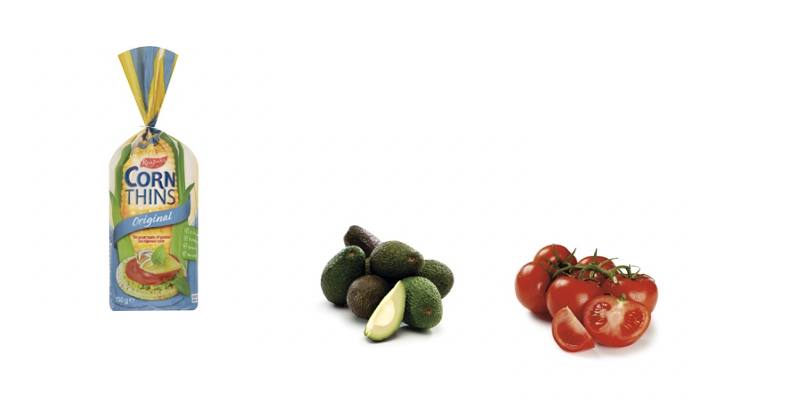
Description
Corn thins or other cruskit variations opt for a light snack. They don’t provide much nutritional value; however, some options can be a good source of fibre. The addition of avocado and tomato increases the healthy fat and fibre content, and add 2 servings of vegetables.
Other options: Wholemeal bread, Arnott’s Vita Weat 9 grain crispbread (highest in fibre), Arnott’s cruskits rye/ original/ lite
Other combos:
peanut butter + banana
hummus + cucumber
Yoghurt + berries
Egg + spinach
Cottage cheese + apple + cinnamon
Apple + peanut butter
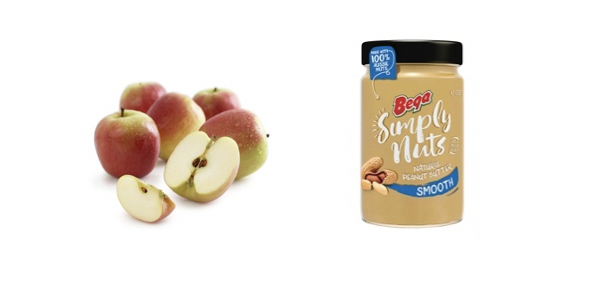
Description
A thin layer of peanut butter on a slice of apple might sound funny to you, but it is so good and I recommend at least trying it once. The apple contributes to 1 of the 2 daily fruit servings, and peanut butter is substantial in protein making it a high-fibre, protein snack.
Date + peanut butter + chocolate
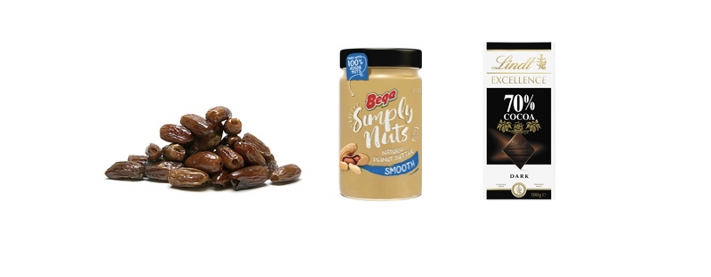
Description
Another peanut butter one, but these are also so good. Dates are a good source of fibre, and natural sugar (energy), and have antioxidant properties. Peanut butter, as we know, is a good source of protein and is a source of fats. As for chocolate, well, in my opinion, these would taste pretty dull without it and you’re only having 1 or 2 dates so you won’t be consuming all that much anyway. Chocolate in moderation is perfectly healthy.
How to make
Ideally, get pipless dates to make your life a bit easier. Open the date up, and put a teaspoon of peanut butter inside. Coat with chocolate and put into the freezer. You will only need 1 or 2 of these to feel satisfied.
Muesli bar
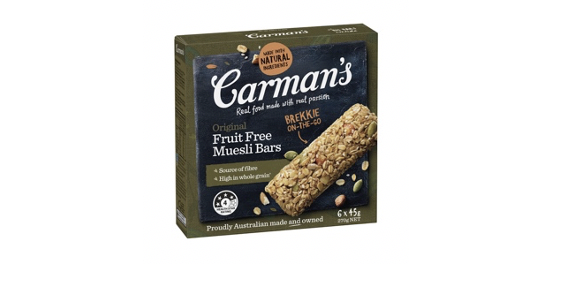
Description
Carmen’s Muesli Bars Original is a good store-bought option hitting the targets in Table 1. Muesli bars can quite easily be considered a discretionary serve. Supermarket variations are often packed with sugar and fat. Using the NIP guide may be particularly useful when selecting muesli bar products in the shops.
Protein balls
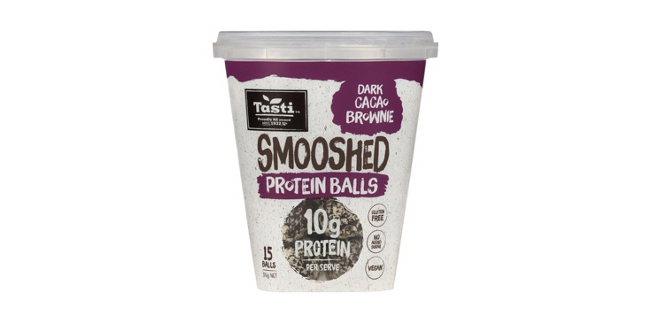
Description
These Smooshed protein balls are a decent store-bought option, however, they are expensive and reasonably high in sugar and fat. They are however high in fibre, and protein. You could make your own protein balls at home as another option.
Trail mix
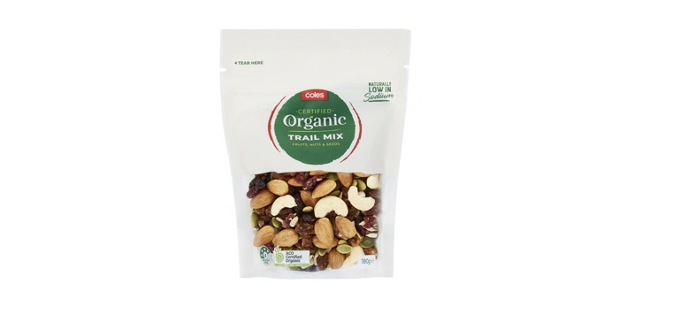
Trail mix, or just nuts in general are a great snack. A handful should suffice, and you will consume a bunch of nutrients and healthy fats.
See related post: Are nuts bad for me?
DJ&A Natures Protein Roasted Edamame
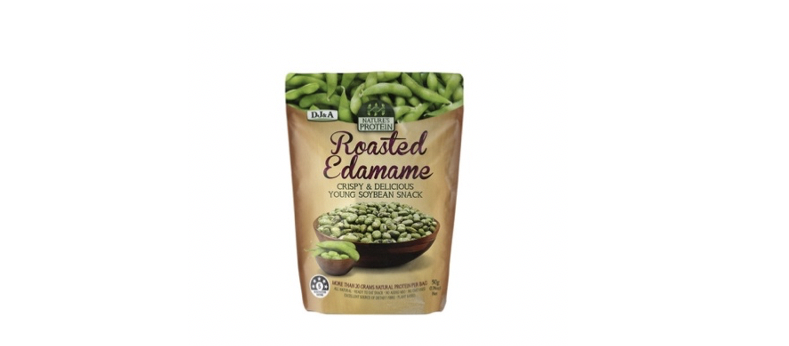
Description
They are high in fibre, and protein and low in sugar. They are a higher fat option which you might want to keep in mind but nothing to stress over. Alternatively, you could have regular canned or bean edamame.
Edgells snack time varieties

Description
They are high in fibre, and protein and low in sugar. They are a convenient snack that can be eaten alone or easily added to a main meal such as a rice dish.
Happy Snack Company Chickpeas Lightly Salted
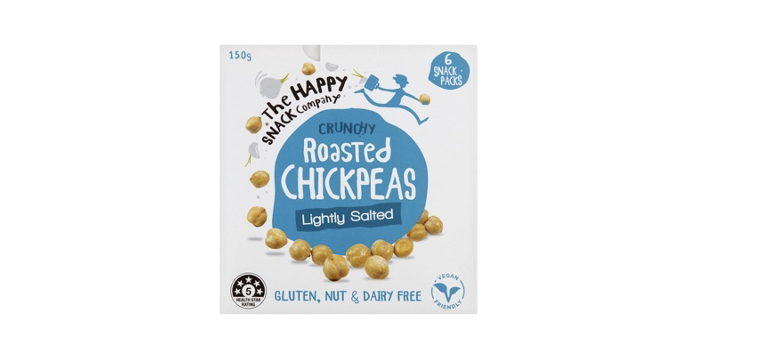
Description
This product is high in protein, fibre and low in sugar. If you like the taste of these ones, they are a good little snack option.
Popcorn
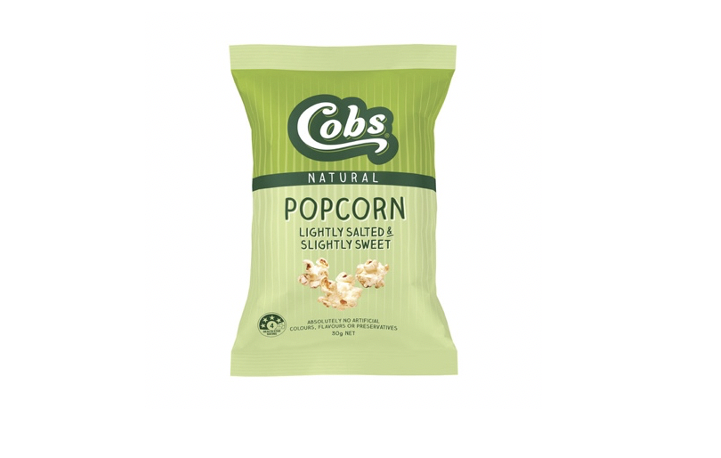
Description
Popcorn is always a good go-to. The thing to look out for would be keeping the sodium levels in popcorn to <400mg per 100g.
Savoury muffin
Savoury muffins are a great way to sneak in some vegetables and still enjoy a textured muffin-style snack. You can make a batch early in the week and freeze the extra ones for later.
John West Protein + Calcium Tuna Dip Sea Salt Lemon & Parsley Crackers
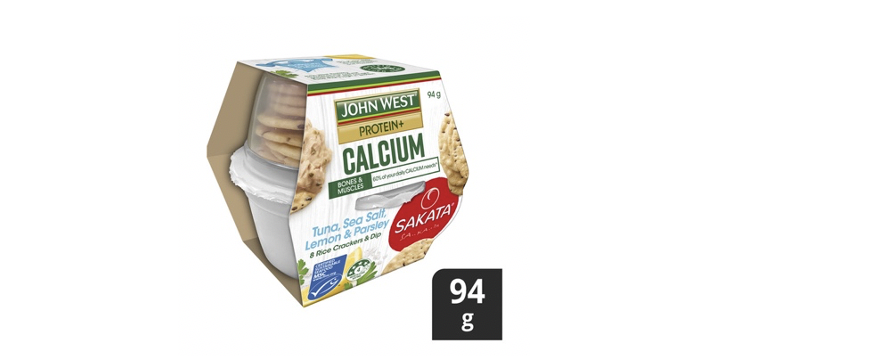
Description
This snack combo is super high in protein and calcium. It is a great on-the-go snack and should keep you feeling nice and full.
Hummus + vegetable sticks

Description
Yep, I left the boring one to last. In my opinion anyway. But it is of course probably one of the healthier options.
I hope this post has helped you navigate snacking and given you more confidence to snack in a way that aligns with your health goals!
See similar posts:
Let the posts come to you!
Recent posts
Enter any nutrition and fitness questions below!
Your question might feature in the next post!
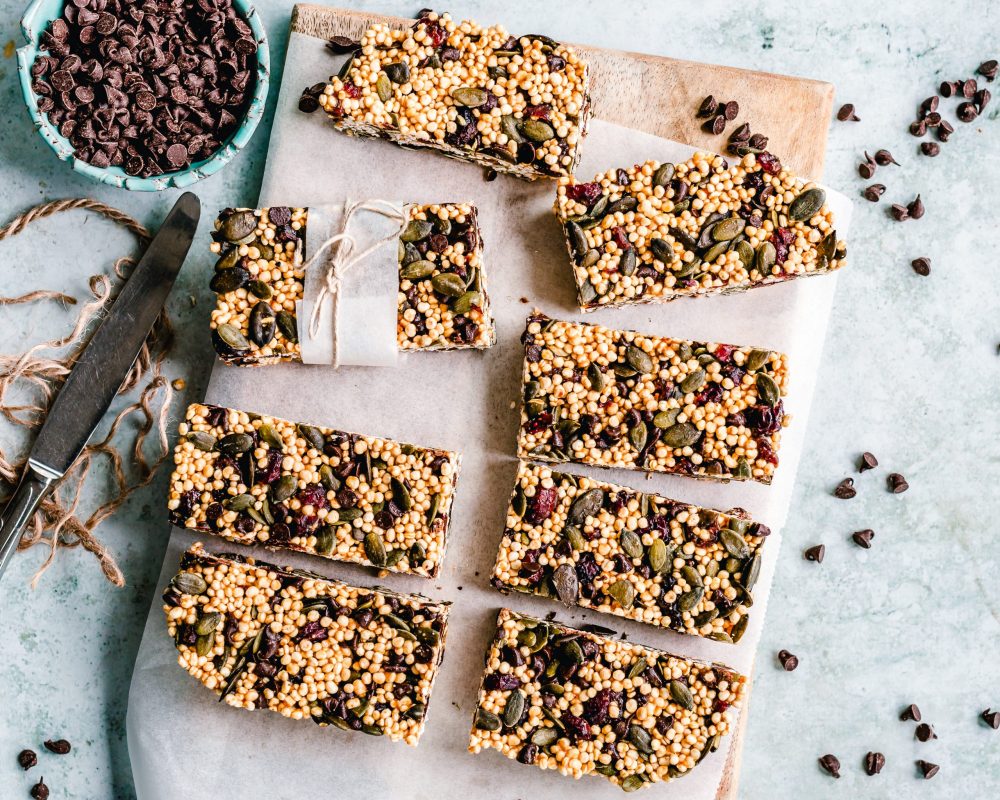
Comments are closed